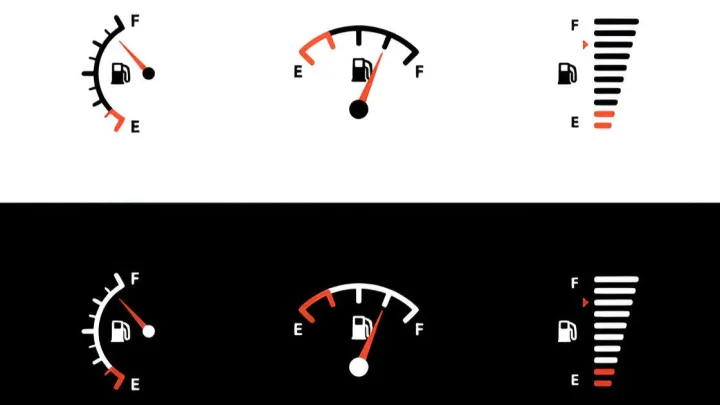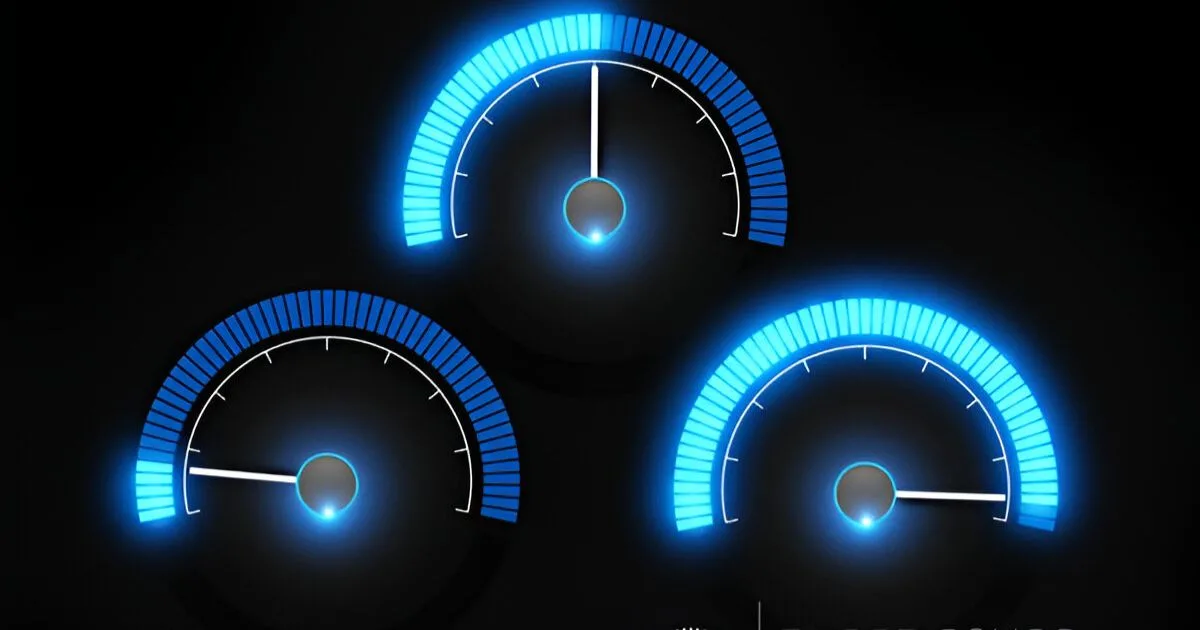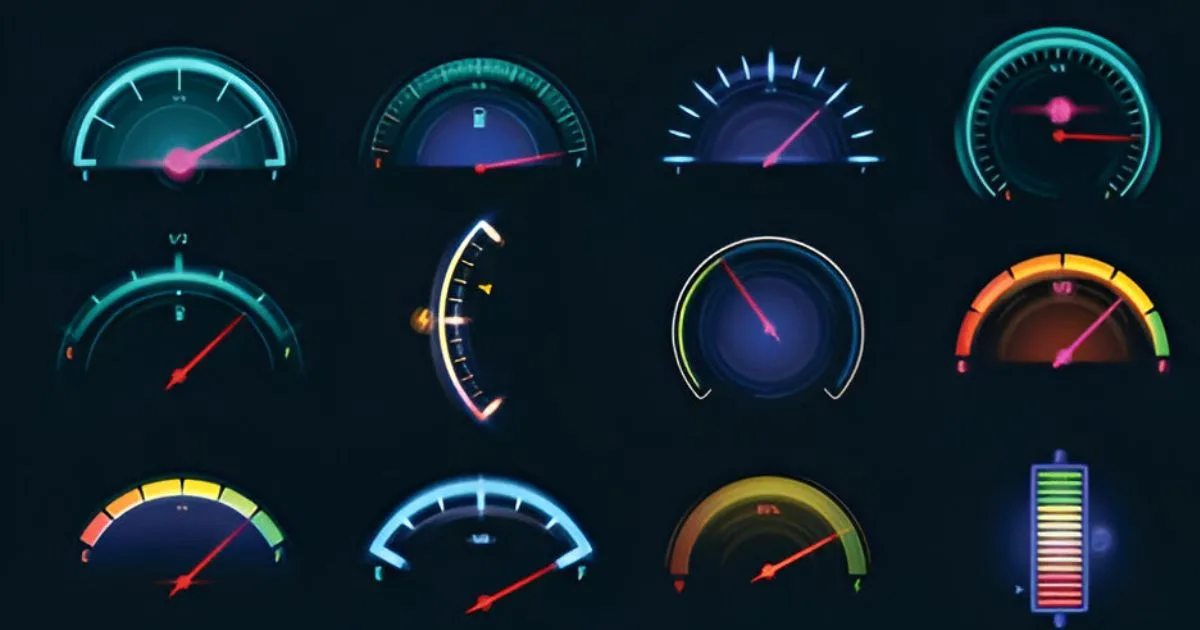
A car fuel gauge stuck on full often indicates a faulty sending unit or a bad connection. Circuit issues or a broken gauge can also cause this malfunction.
Understanding the common reasons behind a fuel gauge that perpetually reads full is crucial for any car owner.
A fuel gauge stuck on full may leave you stranded without warning, as it fails to reflect the actual fuel level in your tank.
The sending unit, which measures the fuel level, can become worn or damaged, leading to incorrect readings.
Faulty wiring or corroded connections can disrupt the signal sent to the gauge, causing it to display inaccurately. The gauge itself could be defective, stuck due to internal problems.
Regular maintenance checks can help identify and resolve these issues before they lead to bigger problems.
Addressing them promptly ensures a reliable and accurate fuel reading, contributing to a safer and more efficient driving experience.
Introduction To Fuel Gauge Issues
A car's fuel gauge stuck on full often indicates a malfunction within the sending unit. Faulty wiring or a stuck float can lead to inaccurate fuel level readings, leaving drivers puzzled and potentially stranded.
A fuel gauge is essential for monitoring fuel levels. Yet, sometimes, it malfunctions, staying stuck on full, causing confusion and inconvenience. This issue can arise from various malfunctions within the fuel system or its electrical components.
The Role Of A Fuel Gauge
The fuel gauge in your car plays a crucial role. It provides real-time data on the amount of fuel in the tank. This gauge ensures you are aware of when to refuel. A fully functional gauge is key to avoiding being stranded without gas.
Common Symptoms Of Malfunction
- Fuel gauge reads full - The most obvious sign of a problem.
- Gauge fluctuates erratically - Indicates potential electrical issues.
- Car runs out of fuel - Despite the gauge showing full.

Mechanism Of A Fuel Gauge
Understanding the mechanism of a fuel gauge is crucial. It tells us how much fuel is left. Let's explore its workings and components.
How Fuel Gauges Work
Fuel gauges are simple yet clever devices. They use electricity to show fuel levels.
A float in the tank moves with the fuel level. This movement changes electrical resistance. The gauge on your dashboard shows these changes. It moves from full to empty as you use fuel.
Components Involved
- Fuel Sender: Sits inside the tank. It has a float.
- Float: Moves up and down with fuel levels.
- Variable Resistor: Changes resistance with the float's position.
- Gauge: Displays fuel level on your dashboard.
These parts work together to keep you informed about your fuel levels.
 Troubleshooting A Stuck Fuel Gauge
Troubleshooting A Stuck Fuel Gauge
Troubleshooting A Stuck Fuel Gauge
Car owners often face a common issue: a fuel gauge stuck on full. A faulty gauge can lead to unexpected breakdowns. Understanding the causes helps fix the problem. This guide walks through troubleshooting steps.
Initial Steps
- Check the fuse: Locate the fuse box. Look for a blown fuse.
- Inspect wiring: Seek damaged wires near the fuel tank.
- Monitor gauge movement: Turn the ignition on and off. Observe the fuel gauge.
Tools Required
| Tool | Use |
|---|---|
| Multimeter | Test electrical connections |
| Fuse Puller | Remove fuses safely |
| Screwdriver Set | Access fuel gauge panel |
 Gauge Cluster Complications
Gauge Cluster Complications
Common Causes Of A Stuck Gauge
When your car's fuel gauge stays stuck on full, it's a sign something's wrong. Let's explore the common issues that lead to this frustrating problem. Knowing them helps diagnose and fix the issue quicker.
Faulty Sending Unit
The sending unit measures how much fuel you have. It's in the tank. When it fails, the gauge reads full constantly. Here are signs of a faulty unit:
- Gauge doesn't move - even after long drives.
- Random gauge jumps - indicating inconsistent readings.
- Fuel light malfunctions - it doesn't light up when needed.
Circuit Issues
Wires connect the sending unit to the gauge. Problems in these circuits can lead to a stuck gauge. Look for:
- Corroded connectors - they block the signal.
- Broken wires - they stop the current flow.
- Loose connections - they create intermittent issues.
Gauge Cluster Problems
The gauge cluster displays your fuel level. Issues here can cause a stuck reading. Common problems include:
- Faulty gauges - they may need replacement.
- Bad instrument panel - it might need repair.
- Power supply issues - they affect the display.
Check these areas to find and fix a stuck fuel gauge. Regular maintenance keeps your car running smoothly.
Electrical Problems And Solutions
When your car's fuel gauge stays stuck on full, it's often due to an electrical issue. Understanding these problems helps you find solutions. Let's explore common faults and fixes.
Wiring Faults
Wiring is the electrical lifeline of your fuel gauge. Over time, wires can corrode or fray. This leads to a loss of connection. Your fuel gauge then reads incorrectly. Inspecting and replacing damaged wires can solve this issue.
- Check for visible damage on wires
- Test wire continuity with a multimeter
- Secure all connections
- Replace any damaged wiring
Grounding Issues
Proper grounding is crucial for electrical systems. A bad ground can make the gauge stay on full. Restoring a good ground connection is a simple fix. You might need to clean or repair the grounding point.
- Locate the ground wire
- Clean the grounding point
- Ensure a tight connection
- Check the gauge for proper operation
Diy Fixes Versus Professional Repair
Some car owners feel confident tackling electrical issues. Others prefer professional help. Know your limits and decide accordingly.
| DIY Fixes | Professional Repair |
|---|---|
| Cost-effective | More expensive |
| Time-consuming | Quick and efficient |
| Requires knowledge | Done by experts |
| Risk of mistakes | Guaranteed results |
Always disconnect the battery before working on your car's electrical system. This prevents shock and damage.
Sender Unit Failures
A car's fuel gauge may get stuck on full due to sender unit issues.
The sender unit, part of the fuel pump, measures fuel level. It sends this data to the gauge. If it fails, the gauge may read full constantly. This can mislead drivers about actual fuel levels.
Signs Of A Bad Sender Unit
- Fuel gauge stuck on full or empty
- Erratic gauge needle movement
- Inaccurate fuel readings
- Check engine light may illuminate
Replacing The Sender Unit
Professional assessment is necessary for sender unit issues. Mechanics test the unit for proper operation. They will ensure accurate diagnosis before replacement. If the sender unit is faulty,
replacement is the next step. Mechanics access the fuel tank for this process. They remove the old unit and install a new one. After installation, they test the fuel gauge to confirm success.
Regular maintenance prevents future sender unit failures.
Gauge Cluster Complications
Gauge Cluster Complications can puzzle many car owners. Your car's fuel gauge
might stay full because of this. Let's dive into common issues.
Faulty Gauges
Sometimes, the fuel gauge itself is broken. It might not move correctly.
This is a key reason your gauge stays full. A mechanic can replace it.
- Signs: Gauge jumps or doesn't move.
- Solution: Professional check is needed.
Calibration Errors
Your gauge might need re-calibration. This means it's not measuring right.
It thinks the tank is full when it's not. A simple reset might fix it.
| Problem | What It Means | How to Fix |
|---|---|---|
| Calibration Error | Gauge reads wrong. | Reset or recalibrate. |
Professional Diagnosis And Repair
A car's fuel gauge stuck on full is a sign something's wrong. It can disrupt your travel plans. You may run out of fuel.
This is why professional diagnosis is crucial. Mechanics have the tools and knowledge. They find the issue and fix it.
When To Seek Professional Help
Don't ignore a stuck fuel gauge. Seek help if you notice:
- Gauge not moving from full
- Erratic gauge movements
- No change after refueling
These signs point to a gauge or sensor issue. A mechanic should check it.
What To Expect From A Mechanic
A mechanic will inspect your car's fuel system. They will:
- Check the fuel gauge and sensor
- Test the electrical connections
- Inspect the fuel tank for issues
They may use a diagnostic tool. This reads error codes from the car's computer. It helps pinpoint the problem. Expect clear explanations and repair options. They should offer a cost estimate before starting work.
Preventive Measures And Maintenance Tips
Keeping your car's fuel gauge accurate is crucial for a smooth drive.
Regular maintenance can prevent it from sticking on full. Let's explore some preventive measures and maintenance tips.
Regular Check-ups
Car health relies on routine check-ups. These visits can spot early signs of fuel gauge issues. Here are key steps:
- Inspect wiring: Technicians check for loose or damaged wires.
- Test sensors: Fuel sensors need testing for proper operation.
- Clean connections: Corrosion-free contacts ensure accurate readings.
Schedule these check-ups at least twice a year. This maintains fuel gauge reliability.
Avoiding Common Pitfalls
Avoid actions that harm your fuel system. Here's what to keep in mind:
- Keep fuel clean: Dirty fuel can clog the system.
- Avoid empty tank: Running on low fuel damages the pump.
- Handle repairs promptly: Fix issues quickly to prevent worsening.
Adhering to these tips can extend your car's life and ensure a working fuel gauge.
Concluding Thoughts On Fuel Gauge Maintenance
Concluding Thoughts on Fuel Gauge Maintenance play a crucial role in keeping your car running smoothly. A stuck fuel gauge can lead to unexpected stops and potential damage. L
et's dive into the importance of keeping your gauges functional and share some final tips to help car owners.
Importance Of Functional Gauges
A well-maintained fuel gauge ensures you know exactly how much fuel your car has. This knowledge prevents you from running out of gas and keeps your car in good health. Here are key points to remember:
- Prevents fuel shortages on busy days.
- Reduces the risk of damaging your car’s engine.
- Saves money by avoiding unnecessary stops or tows.
Final Tips For Car Owners
Maintaining your car’s fuel gauge is simpler than you might think. Follow these tips to ensure it always provides accurate readings:
- Regularly check your fuel level gauge for accuracy.
- Schedule maintenance if you notice irregularities.
- Clean the fuel sensor unit during service visits.
Remember, a functional fuel gauge keeps your journeys smooth and worry-free. Pay attention to it and enjoy seamless drives every day.
Related Post
What Causes a Car Odometer to Stop Working: Key Reasons
What Causes a Car Speedometer to Stop Working: Key Reasons
How to Use a Digital Car Manometer: Expert Tips
How Does a Car Ammeter Work: Essential Insights
Conclusion
Understanding the root causes of a car fuel gauge malfunction is crucial for timely repairs and vehicle maintenance. A stuck gauge can indicate deeper issues, from faulty sensors to wiring defects.
Regular check-ups with a trusted mechanic can prevent potential inconveniences, ensuring a smooth and safe driving experience.
Stay informed, and keep your car in top condition.
Disclosure
Some links may be affiliate links. That means we may earn a small commission at no extra cost to you.